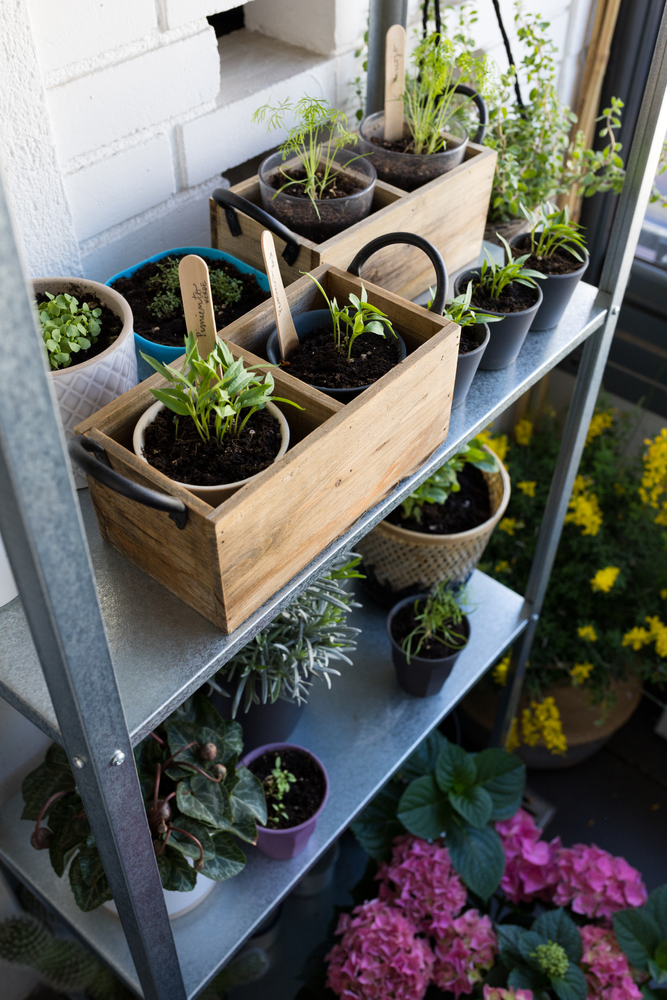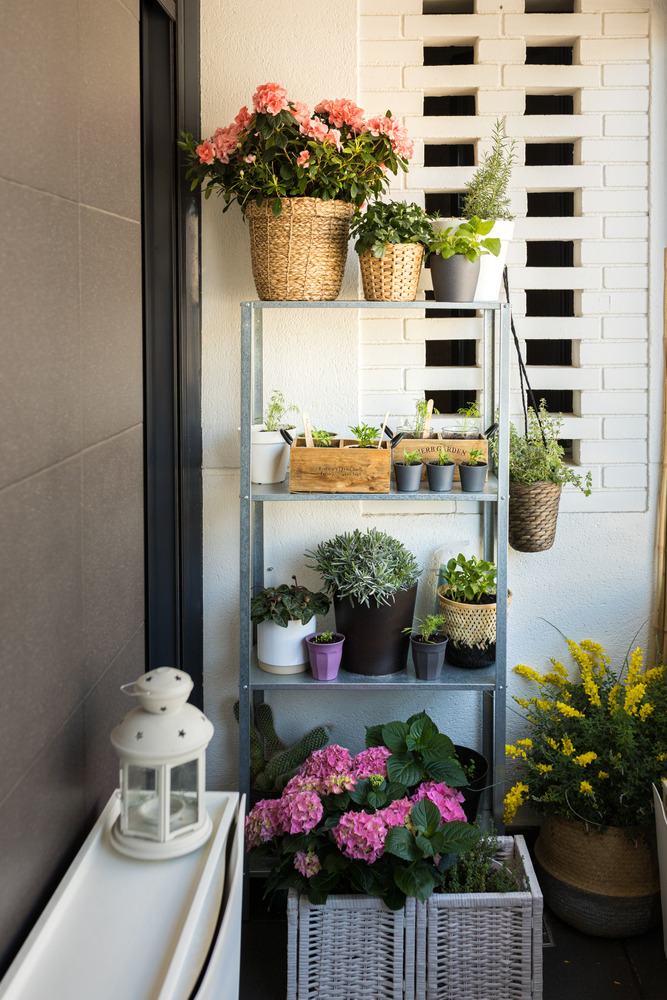Building a vertical indoor garden can seem more daunting than it actually is. You can grow beautiful plants, veggies, and flowers in a small space and instantly elevate your home’s look. With a few handy tips and tricks up your sleeve, you can create a vertical garden that is beautiful and functional, all at the same time. Without wasting any more time, let’s get going.
Step 1: First Off, Focus on the Type of Plants You Wish to Grow
The first obvious step entails selecting the kind of plants/flowers you want to use for your indoor garden. Remember that different plants need sunlight and space in varying amounts. Here’s your cheat sheet for the best kind of plants to use to build a high-functioning vertical indoor garden:
Plant Type |
How to Care For It |
| Indoor plants such as Golden Pothos, English Ivy, Spider Plant, Begonia, etc. | Indoor plants are relatively easier to maintain, requiring low light and dry soil conditions for the most part. That said, each plant type has its own requirements, so make sure to understand the same before you go shopping. |
| Herbs, which include super-useful herbs such as rosemary, oregano, thyme, lemongrass, and sage | A herb garden too grows well indoors as long as these herbs get plenty of sunlight. What’s more, these herbs have an amazing smell and can leave your home looking gorgeously green! |
| Fruits and vegetables such as hydroponically grown tomatoes (cherry tomatoes), leafy greens such as lettuce and spinach, root crops such as carrots, garlic, onions, and so on. | Fruits and vegetables in general require plenty of suns and a warm temperature so keep these factors in mind when choosing the space in which you wish to build an indoor garden. |
Step 2: Select the Room/Space Where You Want to Build a Vertical Indoor Garden
The next step in the process is to understand where you want to grow your garden. Ask yourself the following questions before you zero in on a space:
- Do the plants you’ve chosen need excess sunlight? (Then, your indoor balcony or a sun-facing space, which gets plenty of sunlight can turn out to be great options).
- Do the plants/herbs need little sunlight? (Then, you can think about creating an indoor vertical garden right in your living room!)
The plant types you’ve chosen in the previous step should sit well with the space you in terms of lighting conditions and other spacing requirements. For example, you can install ‘grow lights’ (as shown below) for plants that need sunlight and a long, warm growing season. Note that grow light are exceptionally useful for growing flowers and vegetables indoors:
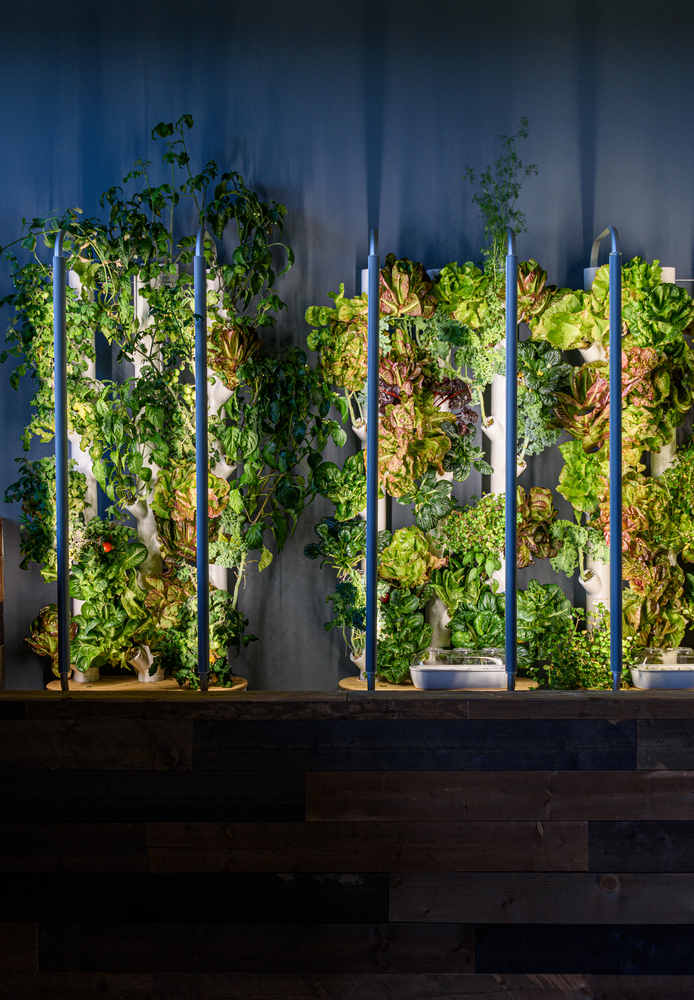
Step 3: Brainstorm on the Kind of Design You Want for Your Vertical Indoor Garden
Finally, you’ll want to zero in on a design that suits your individual taste as well as what your plants need. You can have a simple shelf system that’s installed on the wall to place the pots and planters of choice. Take for example the following image where the industrial-style black metal shelves give the plants a ‘floating’ look:
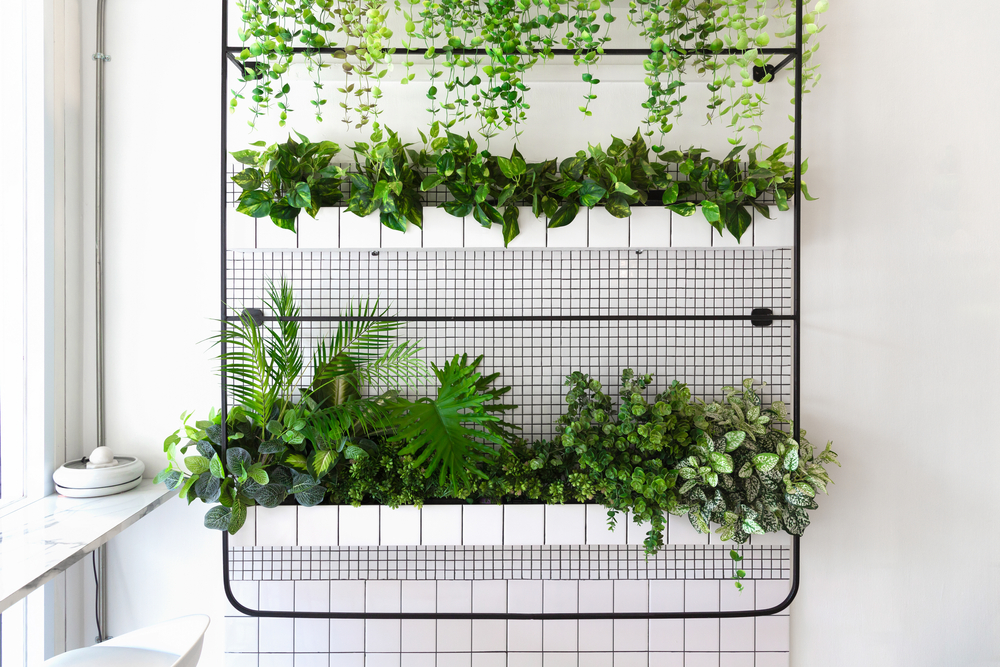
More Design Ideas for Your Indoor Vertical Garden
You can create a ‘Herb Station’ right in the centre of your living room as shown below. While eating, you can literally reach out and pluck your favourite herbs. From seasonal plants to exotic herbs, the playing field is huge for a Herb Station:
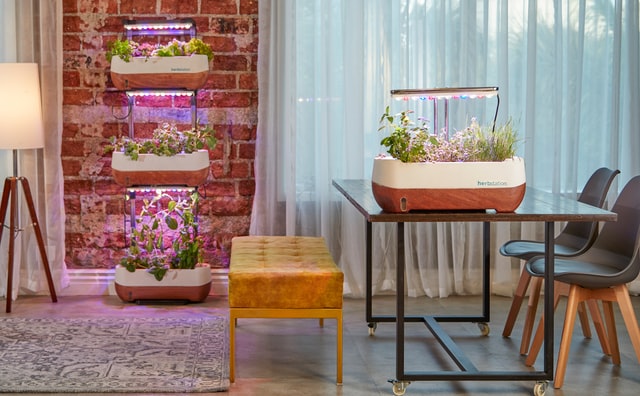
Photo by Altifarm Enverde on Unsplash
Few Other Tips and Design Ideas to Leverage When Building a Vertical Indoor Garden
Here are a few other handy ideas you can leverage when building an indoor vertical garden:
- You can go for stackable planters, which enable you to grow a variety of plants with different soil needs within the same cohesive structure. Stackable plants are great for growing vining plants, such as mint, ivy, or strawberry.
- If you cannot devote enough time to your indoor vertical garden, go for a self-watering vertical plant hanger that’s easily available on Amazon. This system comes with a built-in watering system, which needs to be connected to a water faucet.
- Finally, remember that your vertical garden does need extra care in terms of water, fertilisers, pest control, etc. so make sure to do your homework and build a consistent routine.
There’s no doubt that building a vertical indoor garden is a fun and creatively-rewarding experience. However, for absolute beginners or first-timers, it can become an uphill task. If you want an expert opinion and some added professional help to give your vertical garden the kind of attention and love it deserves, we, at HomeLane, are ready to partner with you. Get in touch with our team today and let’s get the conversation going!


